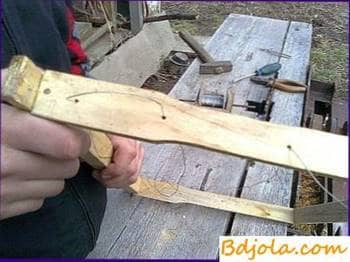Organization of work in the apiary

To work with greenhouse families, the beekeeper spends much more time and labor than on the commodity apiary, located compactly. The beekeeper, who services bees in winter greenhouses, does not have seasonal work: in November, the bees are put in the winter hut, and in the second half of January they are again put into the greenhouses.
The increase in labor productivity is influenced by the equipping of the apiary with high-quality standard, interchangeable hives and frames, the availability of equipment and vehicles, the mode of work, the technology of care for bees,
On commodity apiaries consisting of several points, it is recommended to conduct chain care for bees. The link consists of several beekeepers and temporary assistants. The most qualified beekeeper leads the link, which is responsible for all bee colonies, buildings, equipment and inventory.
The link method of work contributes to better use of individual abilities of each member of the link, qualified, error-free, well-coordinated work with bees.
In hothouse beekeeping because of the scatteredness of bee colonies over hothouses, linkage for bees is difficult. Practice testifies to the advantage of permanent fixing of greenhouses and bee colonies for each beekeeper in greenhouses and on repair apiaries.
In the event that one of the beekeepers has acquired beekeeping knowledge in organized studies (courses) or through independent reading of literature on beekeeping, but has no experience with bees, he temporarily serves bee colonies together with the most qualified beekeeper. At first the beginner helps to open and close the hives, and when you look at the nest, it works with a smoke. After the assistant learns a certain process, he is entrusted with another job, for example, to inspect a group of bee colonies. When it’s time to look at them again, jobs change: the assistant examines the families collected
As it was said above, the morning working hours should be used to work with bees in greenhouses, and later, when it is stuffy in the greenhouses, but outside it (on will) it will get warmer, the work is transferred to the apiary.
The productivity of the beekeeper’s work increases with the acquisition of skills in the work, knowledge of the business, clarity of the goal, confidence in the positive result of his work and the understanding that the work you are performing is necessary for people.
The labor productivity and mood of the beekeeper very often depend on the production environment. On a well-landscaped and well-maintained apiary, where the order is observed and each tool lies on a certain, allocated to it and easily accessible place, there is no time to search for them, a good mood is always maintained.
Each beekeeper has his favorite and unloved work, heavy and light. All of them must be done in a timely and high-quality manner. Alternation and variety of works contribute to less fatigue, increase labor productivity.
A well-organized, well-thought-out work contributes to its successful implementation without much stress, fuss and fatigue. Performing work that requires great physical activity, you need to find time for rest and replenishment of your knowledge both in beekeeping and related specialties, and in the general education plan.
The profession of the beekeeper-hothouse is multifaceted. To successfully manage the economy at the modern level, you need to know well the contents of bees and their biology. In everyday work, you have to deal with the claims of plant breeders to the work of bees. Only with good knowledge of the biology and physiology of plants can a beekeeper protect and justify himself and bees.
As its work, one must always be sure. Often the masters of greenhouses, who gathered the day’s harvest less than others, rush first of all to the beekeeper to find out whether the bees are guilty of this? It happens that the masters complain that there are no summer bees. In this case, they need to clarify that bees on flowers fly “waves.” This is explained by the fact that the bees have just completely collected the nectar from the flowers and it takes some time for the nectar to re-accumulate in them. This is first learned bee intelligence, and then mobilized bee pickers. The bees again fly out to collect the nectar, they will quickly assemble it and the calm will come again. Gradually the intervals between the work of bees on flowers and rest will increase, and in the second half of the day bees on flowers do nothing at all, since the selection of nectar at this time ceases,
Organization of work in the apiary
